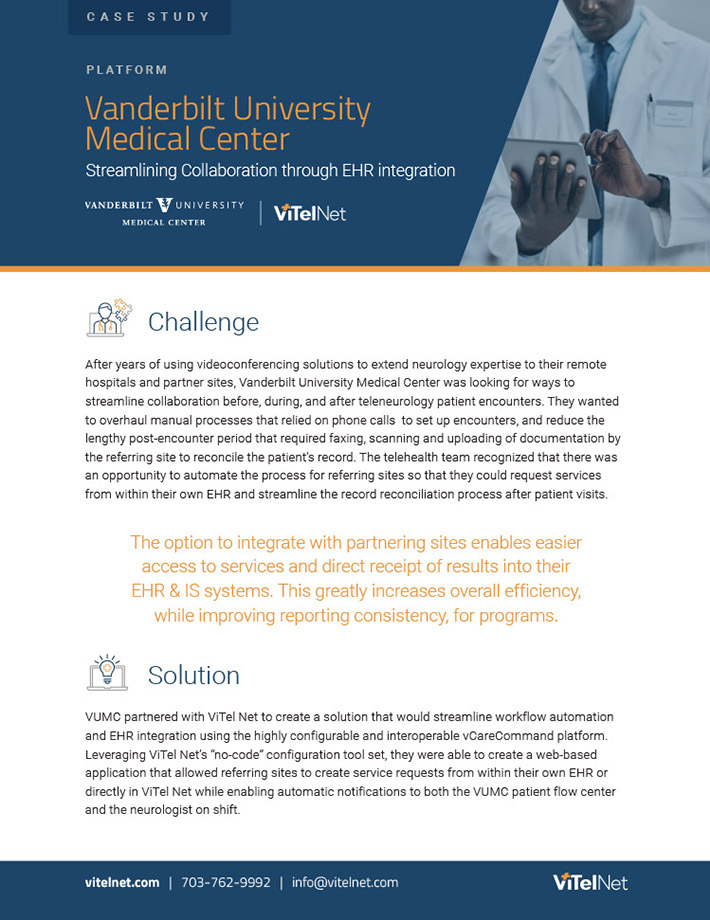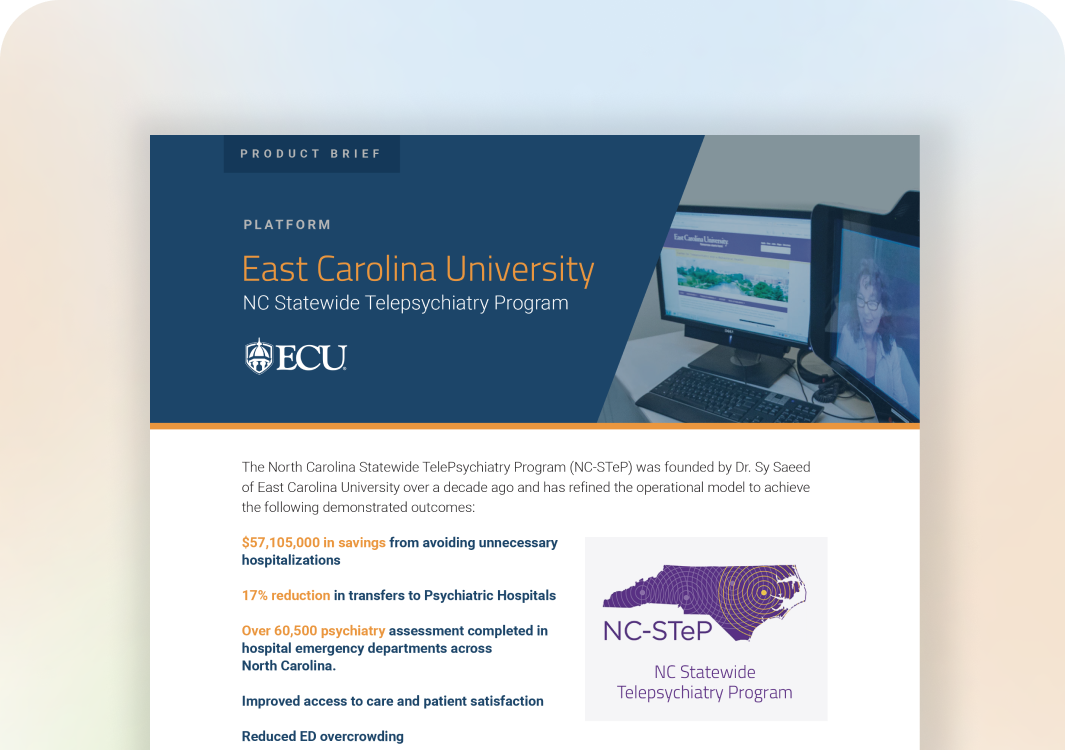Case Study
Vanderbilt University
Medical Center
Streamlining Collaboration Through
EHR-Intergration
Share

Challenge
After years of using videoconferencing solutions to extend neurology expertise to their remote hospitals and partner sites, Vanderbilt University Medical Center was looking for ways to streamline collaboration before, during, and after teleneurology patient encounters. They wanted to overhaul manual processes that relied on phone calls to set up encounters and reduce the lengthy post-encounter period that required faxing, scanning and uploading of documentation by the referring site to reconcile the patient’s record. The telehealth team recognized that there was an opportunity to automate the process for referring sites so that they could to request services from within their own EHR and streamline the record reconciliation process after patient visits.
The option to integrate with partnering sites enables easier access to services and direct receipt of results into their EHR & IS systems. This greatly increases overall efficiency, while improving reporting consistency, for programs.
Solutions
VUMC partnered with ViTel Net to create a solution that would streamline workflow automation and EHR integration using the highly configurable and interoperable vCareCommand platform. Leveraging ViTel Net’s “no-code” configuration tool set, they were able to create a web-based application that allowed referring sites to create service requests from within their own EHR or directly in ViTel Net while enabling automatic notifications to both the VUMC patient flow center and the neurologist on shift.
With varying appetites for investments in EHR integration, VUMC offered partners implementation model options including full EHR integration with the vCareCommand platform or direct access via web portal. For full EHR integration, ViTel Net created both order and result interfaces and worked with each referring site’s EHR team to ensure that the Teleneurology order template captured the information needed to begin assessment. It also automated delivery of PDF summary reports once documentation was completed by VUMC neurologists. For web access, SSO integration with Active Directory credentials enabled clinicians to easily access and request services within the web portal.
ViTel Net’s customized implementation allows VUMC neurologists to document in support of their stroke protocol parameters and defined workflow. Leveraging SSO integration the team was able to save time and eliminate the need for multiple credentials. The application also enabled support for registered endpoints making it easy for local care teams to launch the vCareNet app on iPads or telemedicine carts, while allowing the remote neurologist to drive the video encounter.
Results
- Improved first contact to Provider response time by 30%
- Significantly reduced the number of phone calls between partners and VUMC
- Delivered support to multiple partner sites with disparate EHRs, and ability to add new sites any time

As a result of implementing ViTel Net, VUMC was able to improve support for eight of its partner sites while streamlining clinical efficiency and delivering a consistent interface. The team was also able to successfully reduce time from first contact to provider response and automate patient record updates in both VUMC’s and the referring sites’ EHRs.
Additionally, as a learning health system, VUMC has enjoyed the flexibility to make quick changes to the environment as they discover new ways to enhance their patient and provider journeys.
Using a centralized platform helps the VUMC teleneurology team measure performance and identify areas needing improvement to ensure patients receive consistent and best in class neurology consults






